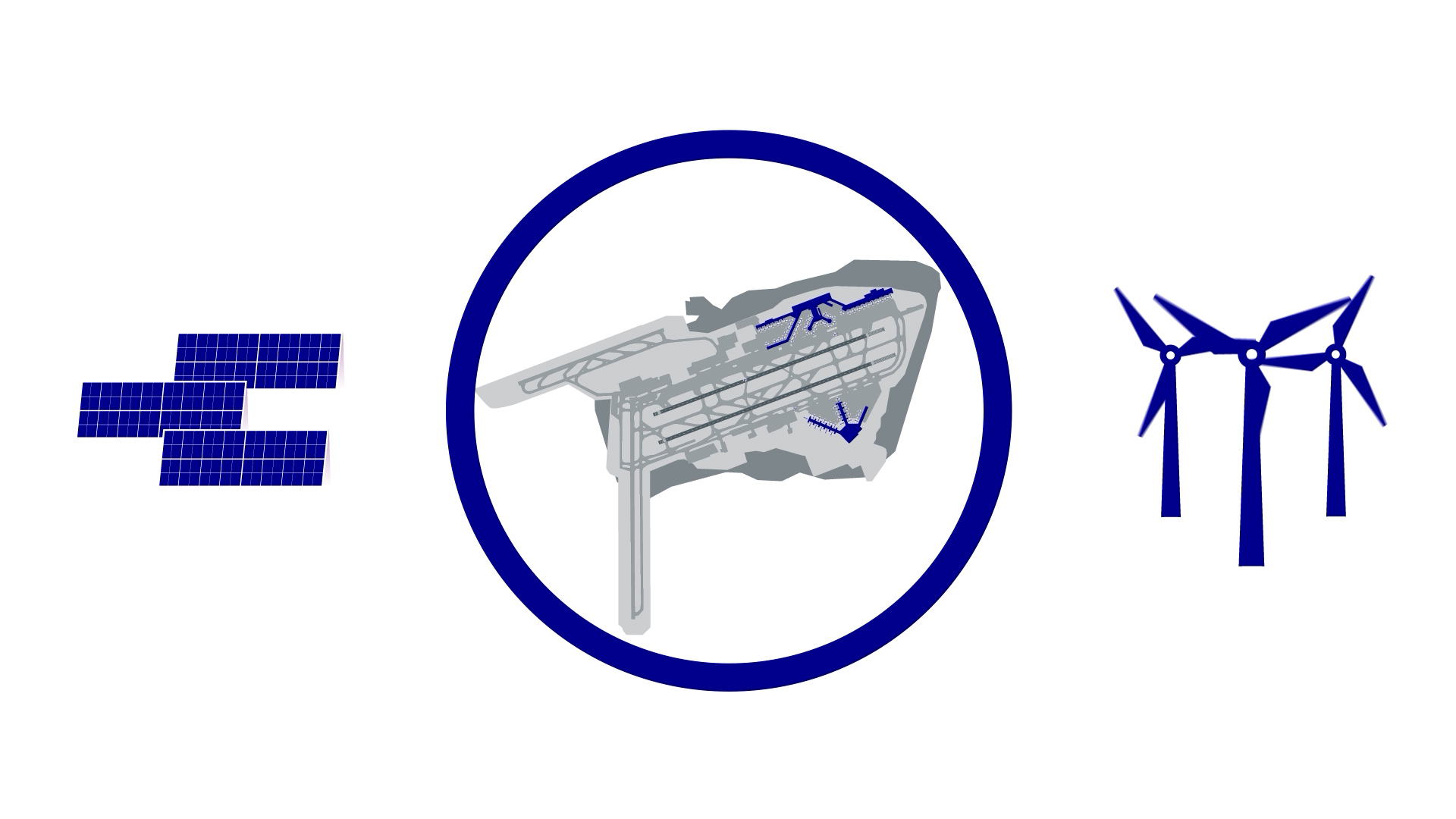October 22, 2025
Solar Power for Fraport: 37,000 Vertical Photovoltaic Modules Enter Into Operation at Frankfurt Airport
2,800-meter long photovoltaic system located along Runway 18 West – Peak output of 17.4 megawatts – Innovative technology receives international recognition – Hessian Minister for Economics and Transport Kaweh Mansoori acknowledges contribution to innovation and progr
Fraport, the operator of Frankfurt Airport, is putting a new photovoltaic system along Runway 18 West into operation. The system will see 37,000 vertically-aligned modules generating up to 17.4 million kilowatt hours of electricity annually for all Fraport Group companies based at Frankfurt Airport. The solar power produced will be used primarily for air conditioning of the terminals and to supply the airport's growing fleet of electric vehicles.
Kaweh Mansoori, the Hessian Minister for Economics, Energy, Transport, Housing and Rural Areas, and Fraport CEO Dr. Stefan Schulte will today jointly pull a lever inside of a transformer station to symbolically open the overall facility. Emphasizing the project‘s crucial importance for the Fraport‘s Group decarbonization strategy, Schulte says: “By 2045 at the latest, Fraport will be operating Frankfurt Airport under a Net Zero model, which means it will be carbon-neutral in terms of greenhouse gases. The main tool for achieving this goal is clear: the energy mix at our home base will come largely from renewable energy sources. Today, we’ve taken a major step towards meeting this ambitious target.”
CEO Schulte adds: “Here at Frankfurt Airport, we’re committed to using green electricity generated from solar sources. Since 2021, we’ve also been integrating smaller amounts of wind-generated power into our energy mix. This means that even now, around 90 percent of our electricity comes from green energy sources. From mid-2026, our
Commitment to innovation and progress in Hesse
Acknowledging the project, Minister Mansoori says: “Frankfurt Airport is Hesse’s gateway to the world and is an important and valuable employer in the region. The opening today is not just a defining moment on the airport’s path towards a climate-friendly energy supply, it also reflects a commitment to innovation and progress in Hesse. As the majority shareholder of Fraport AG, the state of Hesse clearly supports the Fraport Group and its sustainability strategy.”
CEO Schulte adds: “Today's commissioning is a milestone on the road towards our Net Zero climate protection goal. The significant attention that this novel system has received from around the world is also encouraging us to continue with our bold approach, as we break new ground in our quest to take global aviation into a sustainable future.”
In-house maintenance and upkeep
In 2022, Fraport trialled the new technology with a small demonstration facility, successfully putting maintenance and meadowlands care tasks though their paces. Further expansion began in early 2024. The construction timings were based on breeding and nesting seasons, taking into account the different species found in the airport's green spaces that are rich in biodiversity. The vertical structure of the facility ensures that the soil underneath can continue to thrive, as the modules do not obstruct sunlight or rainfall. Fraport CEO Schulte explains: “These advantages make these solar fences attractive not just to our airport, but for public spaces in general. Numerous regional political representatives, urban planners, and colleagues from the international airport industry have all been able to see the value of what we’re doing over the past few months. At Frankfurt Airport, there are also a wide range of expansion opportunities across our runway network, which we’re already considering.”
Combined solution drives stability
In addition to being space-saving and environmentally friendly, the new facility also complements the airport's existing conventional photovoltaic systems. These can be found on roof areas, and are also being installed on the parking structure and the main building at the new Terminal 3. Conventional panels are tilted and achieve peak generation during the midday period, while the solar fence installation at the runway is positioned in a east-west direction, allowing sunlight to be captured during the morning and afternoon hours. This dual combination of technologies ensures a stable solar energy supply is available throughout the day.
Net Zero goal for the entire Group
More information about Fraport's decarbonization plans and the energy supply for Frankfurt Airport can be found in the

